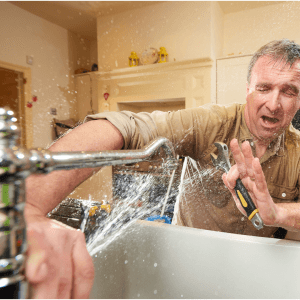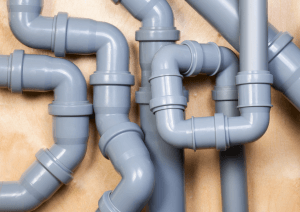Ever turned on a faucet only to be greeted with a forceful, unexpected gush of water? Or perhaps you’ve heard unnerving noises from your pipes, hinting at a pressure issue. Excessively high water pressure, while seemingly a minor inconvenience, can pose significant challenges for homeowners. Not only can it lead to increased water bills and wastage, but it can also strain your appliances and plumbing system, potentially causing costly damages. In this comprehensive guide, we’ll unravel the intricacies of plumbing pressure, and most importantly, explore effective strategies to control and lower it, ensuring the longevity and efficiency of your home’s plumbing infrastructure

Understand Your Plumbing System
Every homeowner should take a moment to familiarize themselves with the intricacies of their plumbing system. This goes beyond knowing where the main valve is; it encompasses understanding the layout, types of pipes used, and their interconnections. When you delve into this intricate system, you’re laying the groundwork for proactive maintenance.
The anatomy of every household’s plumbing may slightly differ, depending on factors such as the age of the property, the materials used, and any modifications or upgrades made over time. By comprehending this, you empower yourself to make more informed decisions, accurately pinpoint areas of concern, and effectively manage water pressure discrepancies that might arise.

Role of Water Mains
The heart of your home’s plumbing system is the water main. Often overlooked, it acts as the gateway, channeling water from municipal supplies or wells into your home. The water main’s pressure setting establishes the baseline for water pressure throughout the entire household. It’s essential to locate this key component and be aware of its condition and pressure settings. This insight enables homeowners to determine if external factors or supply changes might be influencing their indoor water pressure. Moreover, any adjustments or fixes usually commence here, given its pivotal role.
Household Appliances Impact
In the modern home, numerous appliances are interwoven with the plumbing system. These range from the obvious ones like dishwashers and washing machines to others like refrigerators with water dispensers. Each appliance, when in operation, draws from the same water source and can influence overall water pressure dynamics. For instance, when multiple appliances operate simultaneously, you might experience a drop in water pressure in the shower. Recognizing the water consumption patterns and the cumulative effect of these appliances helps in crafting a more strategic approach to managing and mitigating water pressure fluctuations.
Assess the Current Pressure
A preliminary step in managing water pressure is gaining an understanding of the current levels. Utilizing a specialized tool known as a water pressure gauge can provide this much-needed insight. This device, when correctly attached to an outdoor water spigot, yields a quantitative reading of your home’s water pressure. By referencing this reading against the recommended range for residential properties, homeowners can determine if adjustments are required. Furthermore, repeated measurements over a duration can help in identifying patterns, making it easier to address periodic fluctuations.
Frequency of Fluctuations
Water pressure isn’t always a static entity. In some households, it might remain consistent, while in others, significant spikes or drops might be observed at specific intervals. This inconsistency can be attributed to various factors – from peak water usage times in the neighborhood to the simultaneous operation of multiple heavy-duty appliances. By actively monitoring and noting down these fluctuations’ regularity, homeowners can better diagnose underlying issues or patterns. This data-driven approach often simplifies the process of implementing corrective measures.
Adjust the Pressure Reducing Valve (PRV)
For homes frequently grappling with high water pressure, the Pressure Reducing Valve (PRV) serves as a protective shield. Embedded within the plumbing system, its primary function revolves around regulating water flow, ensuring it remains within safe, manageable limits. Should you ascertain through measurements that your home’s pressure consistently veers on the higher side, the PRV becomes your go-to for quick adjustments.
Location and Calibration
The initial challenge for many homeowners is pinpointing the PRV’s location. Typically, this vital component sits close to where the primary water line enters the residence. Once located, making adjustments is relatively straightforward. The PRV comes equipped with a calibration mechanism, usually a screw or bolt. By subtly tweaking this, homeowners can influence the water pressure. But, it’s crucial to re-evaluate with a gauge post-adjustment, ensuring the adjustments align with the desired outcome.
Fix Potential Blockages
Blockages and obstructions within the plumbing system emerge as prime suspects when tackling pressure anomalies. Over prolonged periods, various factors, including mineral deposits, sediments, and foreign debris, can accumulate within pipes. These blockages not only impede water flow but also amplify pressure due to the restricted passage. Proactively checking for such obstructions and implementing cleaning measures can drastically alleviate pressure concerns.
Benefits of Regular Maintenance
A well-maintained plumbing system is synonymous with longevity and efficiency. Regular inspections, cleaning routines, and timely interventions ensure that your pipes remain in optimal condition, free from undue stress or wear. By routinely inspecting the plumbing, homeowners can preemptively spot potential issues, be it blockages, mineral build-ups, or even early signs of wear and tear. This proactive approach not only aids in managing water pressure but also reduces the likelihood of expensive, extensive repairs in the future.
Install a Water Expansion Tank
Water heaters, while indispensable, introduce a unique challenge in the realm of water pressure management. As water heats, it expands. In the absence of room to accommodate this expanded volume, pressure within the plumbing system rises. Enter the water expansion tank. This device acts as a pressure buffer, providing an auxiliary space for the extra water volume. By doing so, it negates the spike in pressure, ensuring a more consistent water flow throughout the home
Frequently Asked Questions
How often should I monitor my water pressure?
Regular monitoring of water pressure is a key preventive measure to ensure the health of your plumbing system. While checking it at least twice a year is a good baseline, it’s prudent to conduct checks more frequently if you’ve experienced issues in the past. Additionally, if you observe any sudden changes in water flow, be it a spike or drop, it would be wise to assess the pressure immediately. Such proactive measures can pre-empt major problems down the line.
Can prolonged high water pressure negatively impact my appliances?
Absolutely. Continuously high water pressure is not just a challenge for your plumbing; it’s a threat to your appliances too. Appliances connected to the water supply, such as washing machines, dishwashers, and water heaters, rely on a consistent water pressure to operate efficiently. When subjected to elevated pressure over extended periods, their internal components can wear out prematurely. This can lead to decreased efficiency, frequent breakdowns, or, in worst-case scenarios, irreversible damage which necessitates costly replacements.
What are some telltale signs of excessive water pressure in my home?
Some of the signs are subtle, while others are hard to ignore. Noisy or banging pipes, often described as “water hammer,” is a classic indicator. This phenomenon occurs when water, propelled by high pressure, stops or changes direction suddenly. Additionally, if you find that you’re frequently replacing washers or seals in faucets, or if appliances like washing machines wear out quicker than expected, high water pressure might be the culprit. Regular leakages, even if minor, can also be symptomatic of pressure issues.
What could be responsible for a sudden surge in my water pressure?
Several factors can instigate an abrupt change in water pressure. Internal factors include blockages, often due to mineral deposits or foreign debris, which can restrict water flow and increase pressure. A malfunctioning PRV is another common internal culprit. On the external side, if the city’s main water supply undergoes adjustments or experiences issues, it can inadvertently influence your home’s water pressure. Always consider both internal and external factors when diagnosing a sudden surge.
Do I really need a water expansion tank in my home?
While not every home might necessitate an expansion tank, its benefits are undeniable. These tanks are particularly crucial for homes with closed plumbing systems, where backflow into the main city line is restricted. In such setups, when water expands upon heating, there’s limited space to accommodate the increased volume, leading to pressure spikes. An expansion tank acts as a safety net, cushioning against these pressure surges. If you’ve observed a consistent rise in pressure post water heating sessions, it’s a clear sign that an expansion tank might be beneficial.
Rely on R.S. Andrews Plumbing Services
Dealing with plumbing pressure challenges might seem like a formidable task, but armed with knowledge, it becomes manageable. And for those moments when you’re in doubt or facing persistent issues, remember that R.S. Andrews’ plumbing services is at your service. Ensuring the optimum health and longevity of your home’s plumbing system is our paramount concern. We’re equipped, experienced, and eager to help you maintain the perfect balance in your plumbing.

